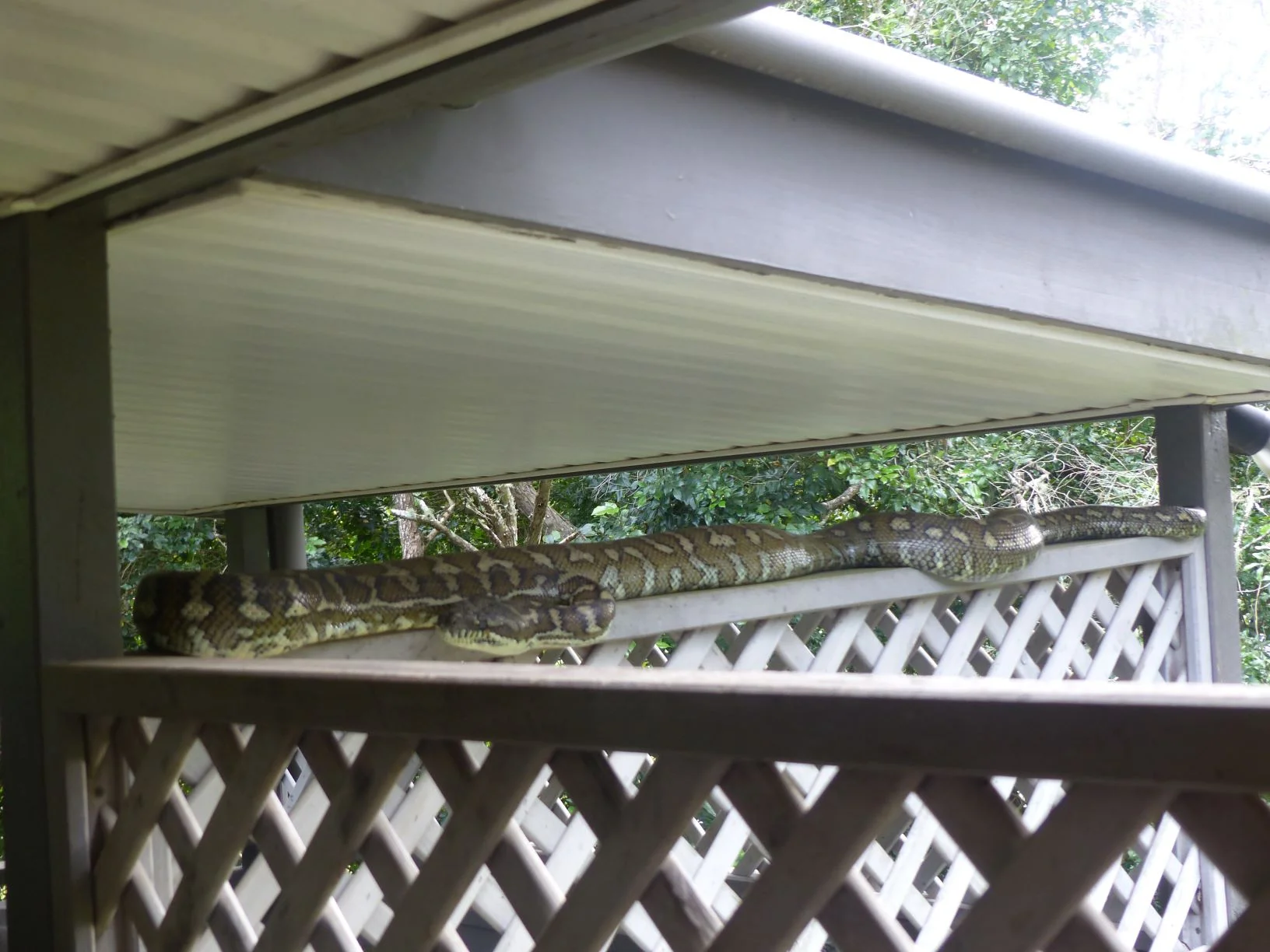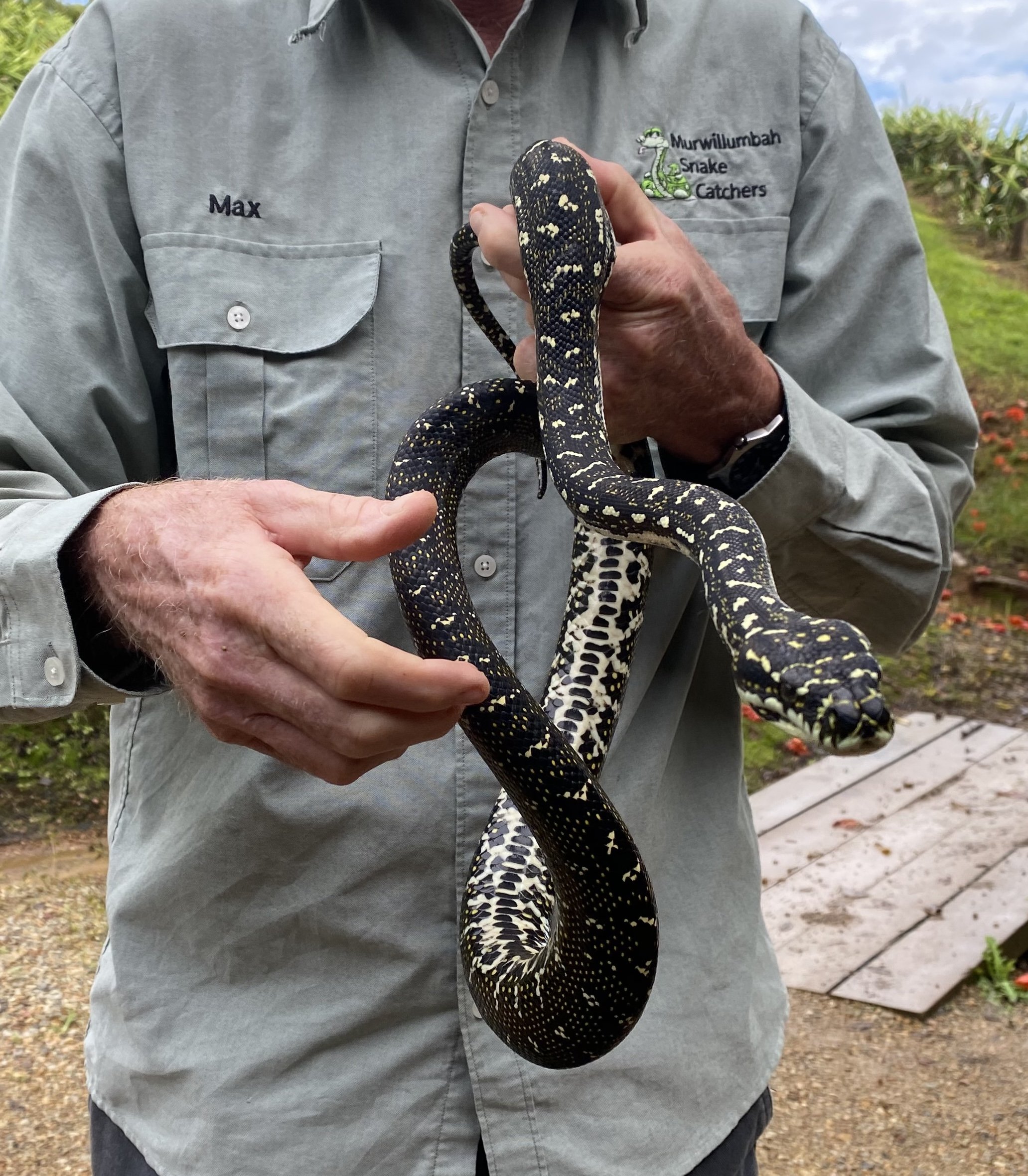coastal carpet python (Morelia spilota mcdowelli)
Other common names: Carpet Python, Carpet Snake
Toxicity: Non-venomous, although does have relatively large backwards slanting fangs that can cause deep puncture wounds.
Description: Classic large, heavy python body with distinct head. Patterns can vary in colour from shades of grey (most common in the Tweed) to brown. Underside is a creamy white. Can grow to over 3 metres in length and approximately 15kg in weight (snake shown in banner at top of page weighed 14kg), although snakes of this size are not common. Carpet pythons come equipped with pits along the upper and lower jaw that allow them to detect animals via infra-red heat.
The Coastal Carpet Python is often confused for the Diamond Python (Morelia spilota spilota), which is a sub species of Carpet Python common along the NSW coast south of Port MacQuarrie. The Diamond Python has distinctively different markings to the Coastal Carpet Python (see photo at bottom of page). Coastal Carpet Pythons and Diamond Pythons have interbred where their territories overlap.
General habits: The Coastal Carpet Python is a strong climber, equally encountered on the ground, in trees, curled up along rafters or in roofs. It is a nocturnal ambush hunter that can also be active during the day. Coastal Carpet Pythons have a rapid strike which is followed by wrapping the body around the prey and constricting. Their skulls are loosely articulated which allows them to swallow prey that may seem impossibly large. Having consumed prey, the snake will find a sheltered position to digest the meal over many days. It is common each year to relocate a snake that has gained access to a bird cage and then is unable to get back out through the cage mesh with it’s meal.
Diet: Lizards, frogs, mice, rats, small birds – working up to possum sized mammals as the snake grows. Snakes capable of killing and eating a possum are also capable of tackling domestic cats. I have relocated Coastal Carpet Pythons that have eaten chickens, rabbits and even a ferret.
Locally: The Coastal Carpet Python is found in all locations in the Tweed and is the most commonly encountered snake. It seems equally at home in the suburbs as in the bush despite it’s size and an abundance of people and dogs. Around the home, Coastal Carpet Pythons are found curled up in garages, on verandah rafters or heard sliding in the roof at night. Bird and chicken owners would be wise to invest in snake proof mesh for their cages. Small Coastal Carpet Pythons are capable of getting into aviaries and taking finches and budgies, but then can’t fit back through the mesh.
Reproduction: Coastal Carpet Pythons lay eggs in a clump. The female stays curled around the eggs until they hatch. She will leave the eggs to bask in the sun and return to transfer the heat to the eggs. Once the eggs hatch, the young are on their own.
Thermal pits showing along lips
Coastal Carpet Python having a drink
Coastal Carpet Python in less common brown markings
Diamond Python





